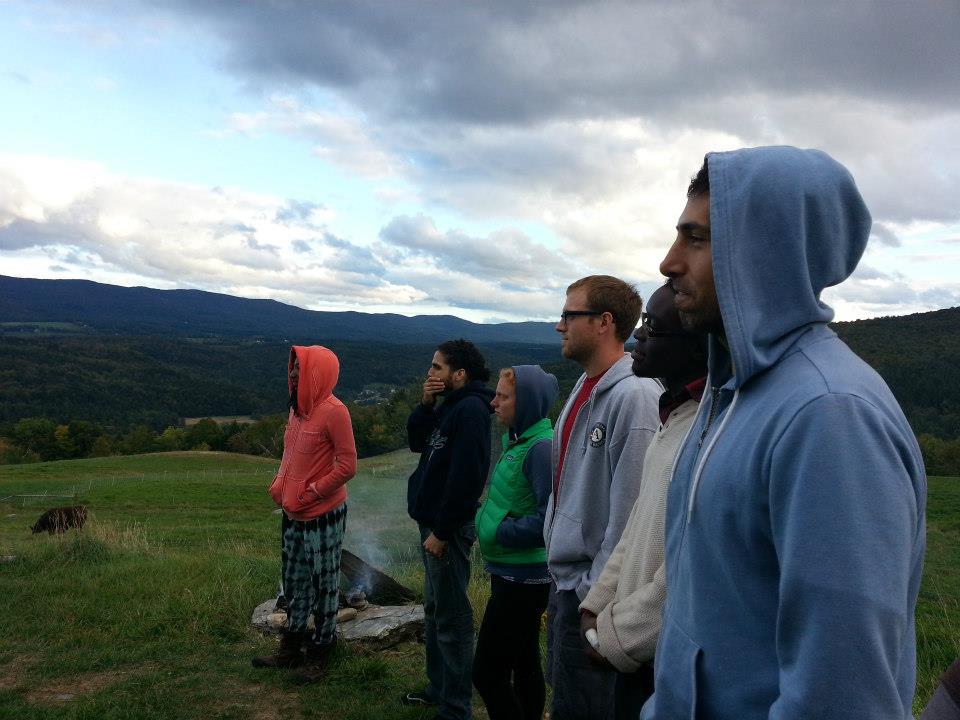I have spent much of my short professional career working in philanthropy, a sector where most people are much older and look different than me. I am Iranian-American, English is my third language, and I had a very modest upbringing. Whether it is my funny sounding name, accent, or appearance, I have always felt a bit isolated. On top of this, I haven’t had the chance to connect professionally to many people whose backgrounds resemble mine. Fortunately, this changed when I went to the Center for Whole Communities (CFWC) retreat in September.
Supported by several funders including some HEFN members, the CFWC NextGen 2012 retreat convened environmental and social justice professionals to strengthen the next generation of leaders, particularly people of color. It’s a space for young professionals who are not often looked to for big vision or strategic wisdom. Participants are selected from a large pool of candidates who have been nominated by CFWC alumni, in my case a HEFN member. My cohort consisted of 18 professionals from across the U.S., mostly people of color, between the ages of 25-35.
The retreat, which aimed to improve our leadership and storytelling skills, and to create community, took place over six days on Knoll Farm in southeastern Vermont. For some, the outdoor camping conditions tested limits. We slept in tents or yurts. Shower facilities were outdoors. There was no electricity. And at night, it was cold and the silence was deafening. There wasn’t much wildlife on the farm except for some coyotes and the occasional black bear. This information provided very little comfort during my late-evening walks back to my tent under a pitch black Vermont sky.
The heart of the retreat was in the intense personal interactions among participants. Each person came from wildly different backgrounds. Everyone was alien, yet incredibly familiar. Whether the topic of conversation was animal rights or Hip Hop or organizing strategies, the intellect and passion in these conversations blew me away.
There were also feelings I hadn’t expected. I was shocked by the pain, sorrow and unhappiness in the stories of young people of color trying to make a difference and a career in the non-profit sector. Most participants, despite their accomplishments and intelligence, expressed that they felt powerless at their organizations. They told stories of being threatened or shut down by superiors after challenging norms around race, gender, and class. Others said they were ignored and their opinions not valued. It is a feeling many young people know in the beginning of their careers. But none of these participants were new to their fields. They were mostly accomplished mid-level staff at NGOs. These were front-line descriptions of a macro-level problem.
Not surprisingly, research paints a similar picture as the anecdotes I heard at the retreat. In its 2011 study, the Level Playing Institute found that “seventy percent of employees of color believe that their employer does not do enough to create a diverse and inclusive work environment.” A 2010 BoardSource survey of non-profit organizations found that 84 percent of all board members at non-profit organizations in the United States were white. In 1993 the number was 86 percent.
Many environmental justice funders and activists have voiced concern about the lack of minority leadership throughout the field for years. Poor people and people of color are most often directly impacted by environmental degradation. It matters when leadership in civil society and philanthropy reflects the diversity and dynamism of the work it supports.
These concerns have not been voiced in vain. Within HEFN’s membership several foundations have supported long-term efforts to close the race, class, gender, and generational gaps within the field. Many environmental justice organizations have committed to shared generational leadership. Others have intentionally recruited staff or board members who reflect the diversity of the communities they serve. Thankfully, a core group of funders have been there to support these efforts.
I believe it is no longer a question of whether or not environmental leadership should become more diverse, it is a question of how. As many current leaders retire, it will be time for a new generation to take the reins of the environmental and social justice movements. I expect that many of my peers from the NextGen retreat will be among those leaders.
By the end of the program I saw a shift in many of the participants and felt it myself. Everyone seemed a little more empowered and confident. Each of us left with a better sense of our own vision. As I got in my shuttle back to the airport on a dewy, cold Vermont morning, I looked back at Knoll Farm eagerly waiting for the future.
Ramtin Arablouei, HEFN’s Program Manager for Environmental Health and Environmental Justice, authored this post. Ramtin joined the HEFN staff in late 2007. Prior to that, he worked with the Children’s Law Center and the St. Mary’s Votes Project.

